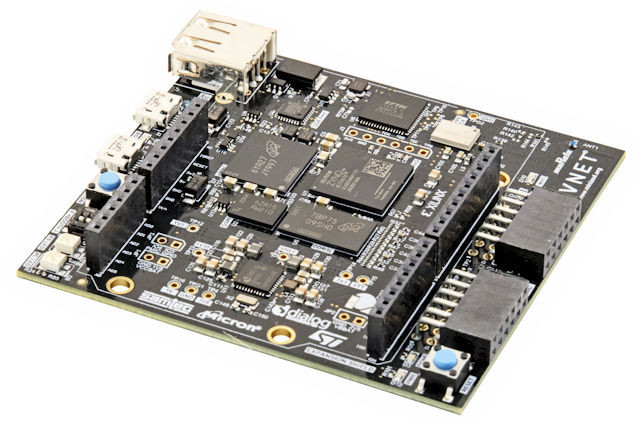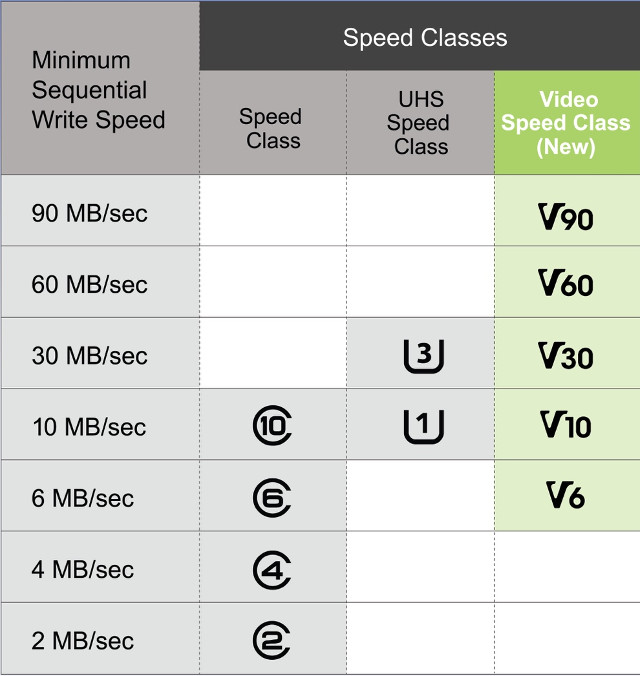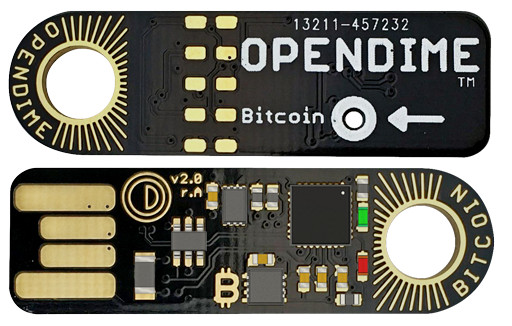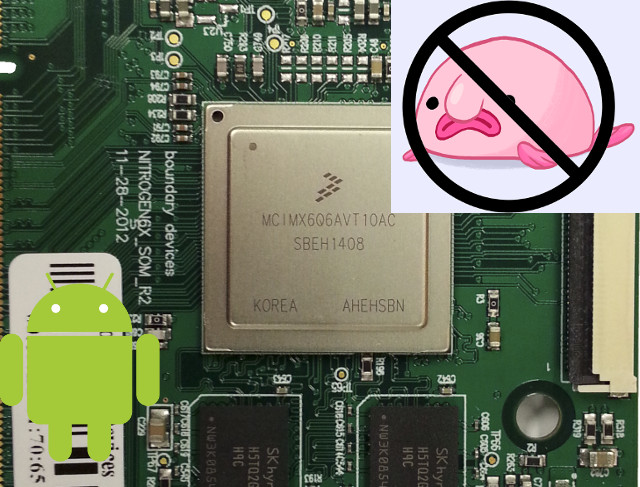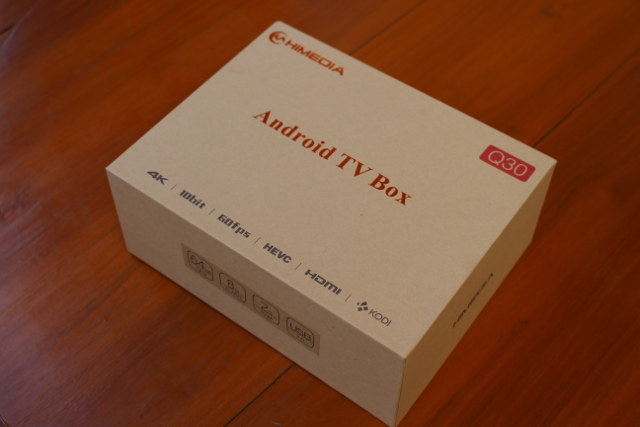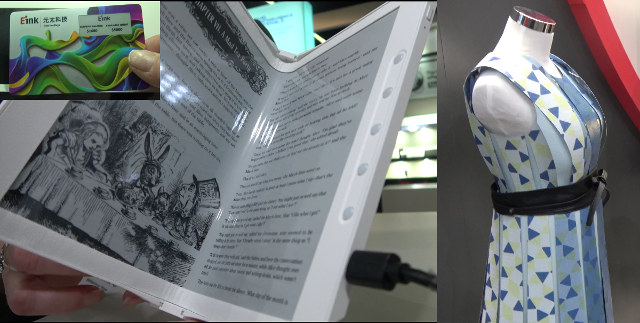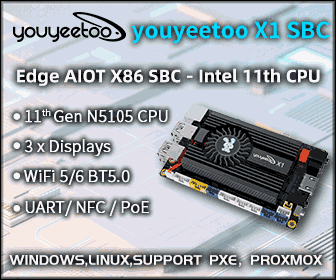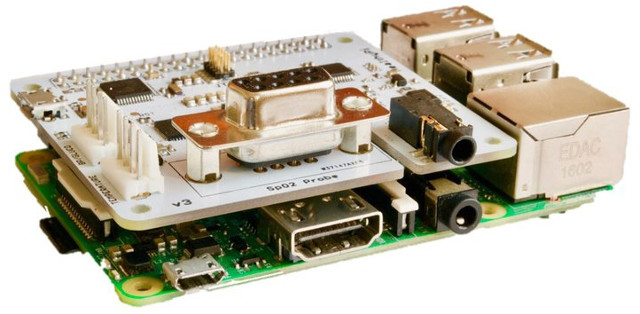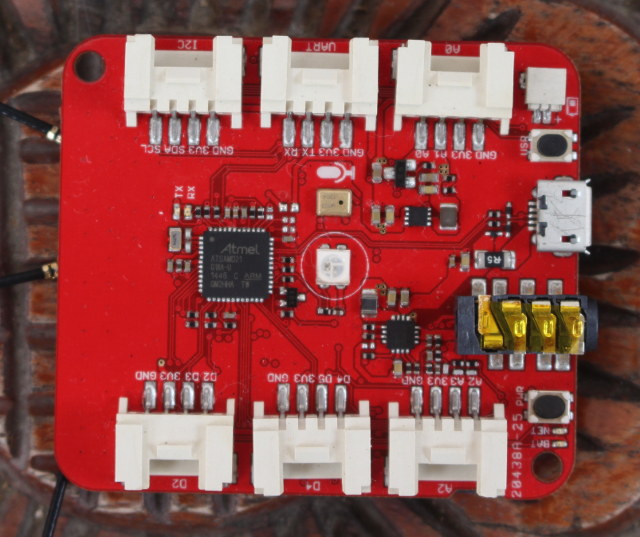Avnet has unveiled MiniZed development board – part of ZedBoard family – powered by a Xilinx Zynq Z-7007s SoC with an ARM Cortex A9 processor and FPGA fabric, supporting WiFi and Bluetooth connectivity, and equipped with Arduino and PMOD headers. MiniZed board (AES-MINIZED-7Z007-G) specifications: SoC – Xilinx Zynq-7007S single ARM Cortex A9 processor up to 677 MHz + FPGA with 23K logic cells, 1.8 Mb block RAM, 60 DSP slices System Memory – 512 MB DDR3L Storage – 8 GB eMMC flash, 128 Mbit QSPI flash Connectivity – Wi-Fi 802.11b/g/n and Bluetooth 4.1 plus EDR and BLE via Murata “Type 1DX” wireless module USB – 1x USB 2.0 host port Sensors – 3-axis accelerator and temperature sensor (LIS2DS12); Digital Microphone (MP34DT05) Expansion Interfaces: 2x Pmod compatible connectors with 16x GPIOs Arduino UNO R3 compatible header with 22x GPIOs Debugging – JTAG and serial console via micro USB port Misc – 2x […]
Micro SD Cards for Development Boards – Classes, Tools, Benchmarks, Reliability, and Tips & Tricks
When people plan to use a development board for their project, they mainly focus on the requirements of the development board itself, as well as software support. But selecting the right accessories may be just as crucial for good performance and stability. For example, selecting a proper power supply is important, as the board may freeze or randmly rebooted if it is not feed at the right voltage. Part of this is selecting a micro USB cable, as you’ll want a cable with minimal resistance which can be achieved through shorter cables and/or a low AWG value. Another important item that can impact stability and performance of the systems are micro SD cards when used to run the operating system in development boards. Understanding SD Card Performance Metrics & Classes Until a few years ago, (Micro) SD cards were primary used to store data such as photos, videos and music. […]
OpenDime is a Bitcoin USB Stick based on Microchip SAMD21 MCU, and ATECC508A Security Chip
The first time I heard about crypto currencies, specifically Bitcoin, was probably around 2011, and later in May 2012, I noticed a “micro-payments with Bitcoin digital currency” talk at a Barcamp. I did not think much of it at the time, but with hindsights, I should definitely have started to mine some Bitcoins considering the price was $5. Nevertheless, cryptocurrencies appear to be here to stay, and while most transactions occurs over the Internet, Opendime project has made a hardware USB dongle to store Bitcoins, and earlier this year, announced version 2 of their “Verified Bitcoin Credit Stick”. Hardware specifications of OpenDime v2.0 / v2.1 USB stick: MCU – Microchip / Atmel SAMD21 Cortex M0 MCU Security Chip – Microchip / Atmel ATECC508A Crypto chip with support for SHA-256, TRNG, and public key signing (ECDSA) USB 2.0 interface to connect to a computer Bitcoin seal The USB stick works like […]
Android Can Now Boot with a Full Open Source Graphics Stack on NXP i.MX6 Boards
While the Android operating systems is itself open source, it still relies on proprietary binary files to leverage GPU acceleration, VPU hardware decoding, wireless connectivity, and so on. It’s been possible to run Android with an open source software graphics stack, but it’s normally terribly slow and barely usable. But Collabora has announced it could now boot Android with a full-graphics stack on iMX6 platforms using no proprietary blobs at all. To do so, they leveraged the work done on Etnaviv open source drivers for Vivante GPUs, and adding the different formats used for graphical buffers in Android and Mesa library using modifiers representing different properties of buffers. They further explain: Support was added in two places; Mesa and gbm_gralloc. Mesa has had support added to many of the buffer allocation functions and to GBM (which is the API provided by Mesa, that gbm_gralloc uses). gbm_gralloc in turn had support […]
HiMedia Q30 (Hisilicon Hi3798MV200) Android TV Box Review – Part 1: Unboxing and Teardown
I’ve often read praises about HiMedia TV boxes in the comments section of this blog, but so far, I had never tested any of their products. This is about to change, since the company has sent me their latest HiMedia Q30 TV box running Android 7.0 on Hisilicon Hi3798MV200 processor, a cost-down version of Hi3798CV200 processor with the same CPU,a lower-end Mali-T450 GPU, about the same media capabilities, and less I/Os. I’ll start the review by checking out the TV box and accessories, as well as the PCBA, before reporting the experience with Android 7.0 firmware in several weeks. HiMedia Q30 TV Box Unboxing I received the device is a package that read “HIMEDIA Q30” and “Android TV Box”, and shows some of the key features like 4K @ 60 fps, 10-bit HEVC, HDR and Kodi support. The devices ships with an IR remote control with IR learning function for […]
E-ink Demonstrated a Foldable E-Book Prototype, Color-Changing Clothes, Smartcards and More at Display Week 2017
E-ink is known with their e-paper technology with the same name, that is used in e-book readers and some signage applications, but the company demonstrated some their prototypes and customer’s products at SID’s Display Week in Los Angeles last month, with some capabilities I had not seen before. Some of the notable solutions and products include: 10.2″ foldable e-book reader prototype based on the company’s flexible Carta Mobius plastic display with 220 ppi A dress that can change colors using E-ink Prism film that was made for a fashion exhibition in Japan. A 42″ active matrix E-ink digital signage display Various examples of products based on E-ink such as smartwaches (e.g. Sony FES Watch U), e-book readers, flexible displays… NFC Smartcard with E-ink display that has the same thickness as normal smartcard, but can be used to display account balance, price of last purchased item, etc… QuirkLogic Quilla interactive and […]
HealthyPi Raspberry Pi HAT Measures ECG, Body Temperature, and Oxygen Saturation (Crowdfunding)
Bangalore based ProtonCentral has launched the third version of Healthy Pi, a vital sign monitor using the Raspberry Pi as its computing and display platform, and capable of measuring body temperature, oxygen saturation, and ECG/respiratory data. Healthy Piv3 board specifications: MCU – Atmel ATSAMD21 ARM Cortex M0 MCU, compatible with Arduino Zero Vital Signs Chips ECG and respiration front-end – TI ADS1292R 24-bit analog front-end with SNR of 107 dB Pulse oximetry – TI AFE4490 Pulse Oximetry front-end with integrated LED driver and 22-bit ADC Temperature – Maxim MAX30205 digital body temperature sensor for skin temperature sensing Expansions Headers and Ports 1x 40-pin header to connect to Raspberry Pi 2x 3-pin connectors for temperature and BP/GLUCO DB9 connector for finger-clip Spo2 probe 3.5mm jack for ECG cable and probes 1x UART connector for an external blood pressure module USB – 1x micro USB port for power and programming Debugging – […]
Review of Wio Tracker with GPS, Bluetooth 3.0 and GSM Connectivity
Wio GPS – also called Wio Tracker – is an Arduino compatible board based on Microchip Atmel SAMD21 MCU with GPS, Bluetooth, GSM/GPRS connectivity, as well as several Grove connectors to connect sensors and modules for your IoT project. SeeedStudio sent me a sample for evaluation, so I’ve tested it, and reported my experience below by testing some of the Arduino sketches. Wio Tracker Unboxing All I got in the package was Wio GPS tracker v1.1 board. The top includes the Atmel MCU, an RGB LED, a microphone and 3.5mm AUX jack to make phone calls, a user and power button, a micro USB port for power and programming, a small 2-pin connector for a battery, and 6 Grove connectors for digital, serial, I2C and analog modules. The other side of the board comes with Quectel MC20 module that handles Bluetooth, GPS and GSM, a dual use micro SD card […]


